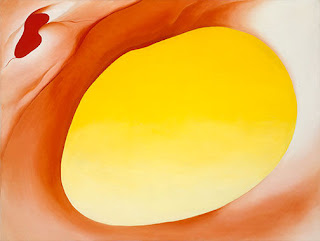
Via The Albuquerque JournalOctober 18, 2020
By Kathaleen Roberts
Presidential candidate Jack Kennedy conferring with his brother and campaign organizer Bobby Kennedy in a hotel suite as they are silhouetted by the sunlight coming through the drawn window drapes. Photo by Hank Walker/The Life Picture Collection. (Courtesy of The Monroe Gallery Of Photography)
ALBUQUERQUE, N.M. — As the pandemic forces our politics into virtual reality, a Santa Fe gallery is taking a look back at the grueling, crowded and ultimately dangerous presidential campaigns of decades past.
Open at Santa Fe’s Monroe Gallery of Photography,
monroegallery.com, “The Campaign” explores the human dimension of the process by which Americans choose their presidents. These photographers sought (and often got) an intimate access far beyond the campaigns’ carefully curated images. The images will remain online through Nov. 15.
“Reporters listen, photographers look,” the late photojournalist Bill Eppridge said about the 1968 Robert F. Kennedy campaign.
“You’re searching for a perspective everybody isn’t getting,” gallery co-owner Sidney Monroe said. “You’re trying to get something beyond their image machine. It’s grueling.
“Campaigns were not as big; they were not as fast,” gallery co-owner Michelle Monroe added. “You could do a cross-country train trip. Everything now is not staged, but they try to control it. The very relationship with the press has changed everything – when you think of the press being complicit in hiding (Franklin) Roosevelt’s disability.”
Richard Nixon giving a speech to the residents of Suffolk County, New York, while on the 1968 campaign trail. By Irving Haberman.
Not a comprehensive exhibit, the show features only the artists in the gallery’s stable and their most significant campaigns.
The exhibition examines a time when photographing presidential campaigns often required patience and endurance: long days were the norm, and getting beyond the carefully constructed stagecraft and tightly scripted events proved difficult. Campaign staff and security frequently monitored (and controlled) the movement of media; capturing iconic visual symbols of democracy in action was the forte of the successful campaign photograph.
Hank Walker’s 1960 silhouette of John and Robert Kennedy conferring in a Los Angeles hotel bedroom shows the two brothers in deep conversation. Walker covered the campaign for Life magazine.
“Bobby was acting as campaign manager for Jack,” Sidney Monroe said. “That’s the moment Jack told Bobby he had chosen (Lyndon) Johnson as the vice presidential candidate. Bobby and Johnson were sworn enemies.
“Later, in the hallway, Walker saw Bobby storm out, swearing, ‘S—, s—, s—.’ ”
“Jack thought it was the only way he could win Texas,” Michelle added. “Bobby referred to Johnson as ‘an animal.’ ”
Sen. Robert F. Kennedy and members of the “Fearsome Foursome” of the Los Angeles Rams football team in Indianapolis, 1968. By Bill Eppridge.
Joe McNally’s 1988 portrait of then-presidential candidate Joe Biden riding a train captures the candidate in a contemplative mood.
“It was also after Biden had suffered an aneurysm and this was his return,” Sidney said. “(McNally) said he came across as a stoic, very relatable candidate.”
Hillary Clinton during the 2008 presidential campaign. Photo by Brooks Kraft.
Irving Haberman’s campaign silhouette from 1968 shows the unmistakable shadow of Richard Nixon.
“It’s a prime example of a great campaign photograph,” Sidney said. “It’s dramatic, it carries a lot of weight; it’s kind of heroic.”
Most photographers captured Hillary Clinton emoting, with her mouth open, during the 2008 presidential race. Brooks Kraft took the opposite approach, shooting her listening to a constituent as she held a cup of coffee.
“He was the White House photographer for Time magazine for 10 years,” Sidney said.
John F. Kennedy, on-set monitor at the first-ever televised presidential debate, 1960. By Irving Haberman.
Kraft’s portrait of Barack Obama speaking in the rain reveals the determination and grit necessary to run for president.
“That’s actually Brooks’ favorite photograph,” Sidney said. “It really is a transcendent image.”
President Barack Obama speaks in the rain during a campaign rally in Glen Allen, Virginia, 2012. By Brooks Kraft.
In 1960 Haberman captured the Nixon-Kennedy first-ever TV debate from both the stage and its monitors.
“He was working for CBS as a photographer, so he had intimate access,” Sidney said. “It was the first time when candidates had to look good on TV. Everybody says the way Nixon looked is what sank him. There’s a lot packed into that picture.”
Joe Biden commuting on a train in 1988. By Joe McNally.
A trio of Eppridge’s Life magazine photographs capture both the excitement and the danger of Robert Kennedy’s 1968 presidential bid. The images include the famous “Fearsome Foursome” Los Angeles Rams football players who served as his bodyguards. His passionate supporters ranged from people of color to women and immigrants. Eppridge said it was hard not to be inspired and retain his journalistic neutrality.
“It was after (Kennedy’s) brother’s assassination, which was an open wound,” Michelle said, “and the sense of hopelessness that the Vietnam War would go on forever.”
Eppridge said as the crowds swelled into pandemonium on a daily basis, even the press were in fear for the candidate’s life.
If you go
WHAT: “The Campaign”
WHEN: 10 a.m.-3 p.m. Sunday-Thursday; 10 a.m.-4 p.m. Friday-Saturday
WHERE: Monroe Gallery (Face masks required; limited to 10 visitors at a time)













